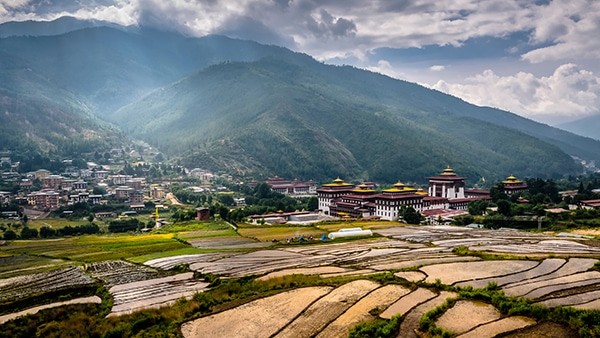PM2.5 is more than three times the WHO’s recommended limit for Thimphu
The average fine Particulate Matter (PM2.5) concentration during the years 2018 to 2020 was 32.47 microgram per cubic meter (µg/m3), three times the World Health Organization’s (WHO) recommended limit of 10 µg/m3 for Thimphu.
This is as per a recent study, tittled “Transboundary sources dominated PM2.5 in Thimphu, Bhutan”, that was published in the International Journal of Environmental Science and Technology.
Based on known health effects, WHO has set 10 µg/m3 as recommended limit for the long term (annual mean) and 25 µg/m3 for the short term (24 hours) as indicators of the PM pollution.
For the short term, the study finds that PM2.5 in Thimphu has exceeded the WHO’s prescribed limits of 25 µg/m3 on 38.3, 63.4, 39.4% days in 2018 (March–December), 2019 (January–December), and 2020 (January–September) respectively.
Additionally, it states that during the lockdown in Thimphu from August 11, 2020 to September 21, 2020, only a marginal reduction of 4% was observed in the PM2.5 concentration in 2020 when compared to the average concentration in 2018 and 2019 combined. It confirmed that the air pollution is mainly due to transboundary sources.
PM2.5 are particles with aerodynamic diameter less than 2.5 µ/m3 that pose great danger to health and are a resultant of different types of combustion activities (motor vehicles, power plants, wood burning, etc.) and certain industrial processes.
The major components of PM are sulfate, nitrates, ammonia, sodium chloride, black carbon, mineral dust, and water.
The study states that the ambient air pollution of PM2.5 was mainly due to the transboundary sources from India, contributing the majority at 44%, followed by Bangladesh at 19%, local emissions 19% and China at 16%.
Since 2009, Thimphu has already recorded an annual average level of PM10 (particulate matter with a diameter of 2.5-10 micro-meters) of 30 µg/m3, which is higher than the WHO’s standard of 20 µg/m3.
PM10 is generally understood as respirable dust that is inhaled by humans. However, PM2.5 can penetrate into the respiratory and nervous system with detrimental development effects such as low birth weight and increased infant mortality.
According to the WHO, ambient air pollution accounts for an estimated 4.2mn deaths per year due to stroke, heart disease, lung cancer and chronic respiratory diseases globally.
Acting Medical Superintendent at the Jigme Dorji Wangchuck National Referral Hospital, Dr Sonam Gyamtsho said air pollution related diseases like chronic obstructive pulmonary disease, bronchial asthma are not observed in Bhutan unlike in other polluted cities globally.
Additionally, he said, respiratory diseases like seasonal flu, pharyngitis, allergic, asthma are seasonal in the country, especially observed during the winter and flowering season.
Transboundary air pollution under the regional phenomenon of ‘Atmospheric Brown Cloud (ABC)’ is becoming an issue of concern for local air quality with likely impacts on health, glaciers and agriculture, according to the National Environment Commission (NEC).
ABC is generally observed over South Asia in the winter months due to increased pollution from burning of biomass and fossil fuels in the region, mostly because of the winter weather conditions.
Black Carbon is a major component of soot in ABC and the deposition of black carbon on the snow and ice reduces the surface albedo (measure of reflectivity of the earth’s surface) resulting in accelerated glacial retreat and snow melt, as per the NEC.
Additionally, it also affects rainfall patterns by disrupting cloud formation and has negative impacts on human health and crop production.
The Male Declaration on Control and Prevention of Air Pollution and its likely transboundary effects for South Asia of 1998 under the South Asian Cooperative Environment Program was an attempt to address these issues of transboundary air pollution in South Asia.
However, the activities have been limited to capacity building and monitoring of air quality within national boundaries, according to the NEC.
Thukten Zangpo from Thimphu












